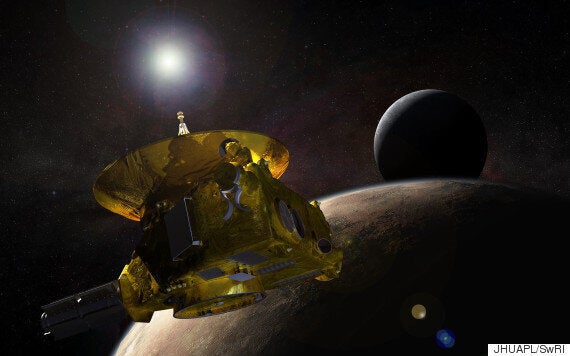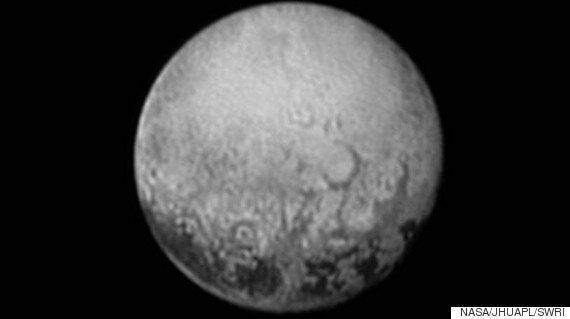New Horizons has now reached its closest point yet with Pluto.
NASA tweeted the announcement along with the clearest picture yet of the tiny planet.
While this won't be the highest-resolution image we'll see of the planet, it's certainly the clearest look we've ever had since New Horizons began its 1 million mile final approach.
Having travelled over a distance of over 8 million kilometres the small spacecraft has taken nine years to reach Pluto travelling at a speed of 30,800 miles per hour.

With over seven billion kilometres separating New Horizons from Earth, communications now take hours to travel back to Earth so it won't be until Wednesday before NASA is able to reveal any truly high resolution images.
While New Horizons carries out its final approach it'll go silent as far as Earth is concerned, the spacecraft will be devoting all of its power supply to powering all the seven sensors.

Guests and New Horizons team members countdown to the spacecraft's closest approach to Pluto.
It's a major landmark as it'll be the last of the 'classical' nine planets that inhabit our Solar System to be visited by a spacecraft from Earth.
Echoing the excitement of the scientists involved, U.S. President Barack Obama tweeted his congratulations to the team and highlighted the event as an example of American innovation.
READ MORE:
Earlier in the month New Horizons grabbed one of the last images of the planet's far side, revealing a mysterious array of 'dark spots' that has scientists baffled.
The photo gives us our clearest and last view of the planet's mysterious 'dark spots' which, at over 300 miles in length, are puzzling scientists as to their origin.

The dark spots have gained attention for a number of reason ranging from the the spacing of the dark spots to their composition.
Jeff Moore of NASA’s Ames Research Center, Mountain View, California, sums it up saying. “We can’t tell whether they’re plateaus or plains, or whether they’re brightness variations on a completely smooth surface.”
While the 10-year mission is obviously focused around Pluto, the team at NASA have built the spacecraft to survive long after it passes the planet.
Extra fuel has been included along with solar panels that are designed to work in far lower light levels than can be found at Pluto's extreme range.
The hope is that New Horizons will be able to go deep into the Kuiper Belt where it'll use its long-range communications system to send back new data on what lies beyond.